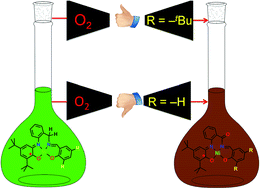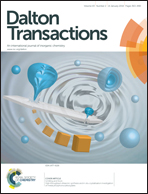Abstract
Two radical-containing Ni(II) complexes having either parent salicylidene (complex 1) or 3,5-di-tert-butylsalicylidene (complex 2) in the ligand backbone were synthesized. Complex 2 underwent ligand centered C–H activation by aerial oxygen, forming the corresponding amide complex (2a). The UV-Vis/NIR spectral changes upon purging of molecular oxygen to 2 in CH2Cl2, along with ESI-MS analysis indicated the generation of Ni–oxygen/dioxygen species as the intermediate(s) for the amide formation. Interestingly, non-participation of the ligand centered π-radical in the oxidation process was observed.


 Please wait while we load your content...
Please wait while we load your content...